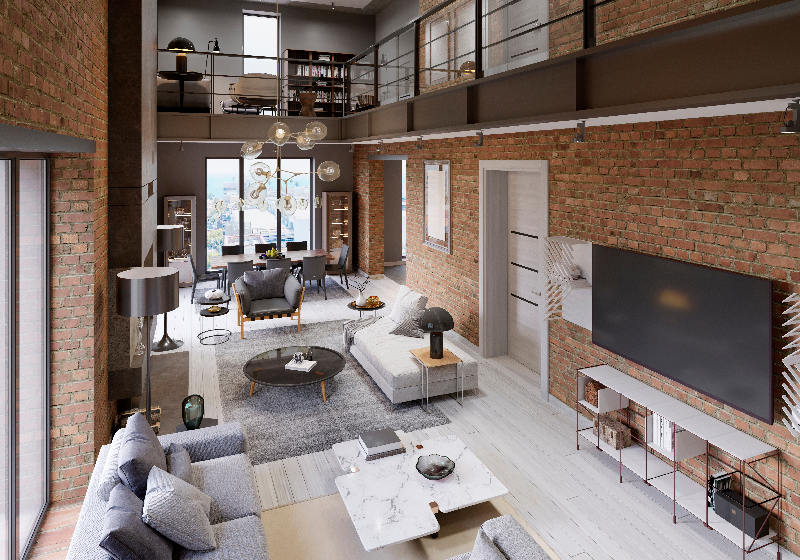Low performing, older office buildings are falling out of favor as work-from-home opportunities expand. In 2020, the coronavirus pandemic forced business owners to change how they looked at managing their employees. To keep running, everyone had to learn how to operate remotely, and two years (and counting) later, it seems as though the workplace may never return to “normal.” Many workers have become accustomed to their newfound flexibility and freedom, and to remain competitive, companies are offering more diverse workplace opportunities.
As the world adjusts to new standards, property owners have to adjust as well. Addressing the growing issue of their empty offices has been a difficult task. One potential answer to office owners’ woes has been residential conversions, but how feasible is this option? When do the finances make sense? And what types of buildings are ideal candidates? Here, we look to provide some clarity on this post-pandemic trend.
Setting the Table
While office space investments have been struggling, one form of commercial real estate that has been consistently performing are multi-family properties. Converting a property from a riskier class to something more stable is enticing, but not every case makes sense for this sort of investment. For the past two years, Gensler has conducted a study, evaluating office buildings across North America on their ease of conversion into residential buildings. Through this process, they found that approximately only 30% of buildings were suitable for this kind of conversion.
Some of the most crucial factors in determining successful conversions include floor plate size, building form, and location. As a general trend, Gensler found that consistent, “cube”-modeled and “wedge”-modeled office buildings were particularly receptive to residential conversions, while the “blinder”-style office buildings were least receptive, based on close proximity to other buildings and limited window space. For these office spaces, a shape and location conducive to residential life are vital before even considering this sort of conversion.
Surprisingly, though, Gensler also found that certain traits found in lower-end, older office buildings make for the most appealing residential conversions. For example, while typical Class C office buildings have ceilings of around 12 feet, anything above 9 feet is considered high-end for residential spaces. Ultimately, finding success in an office-to-residential conversion is entirely dependent on your property’s specific situation, as there are no absolute rules to follow. What investors and property owners can do is look at similar examples of success.
When It Works
An office-to-residential conversion offers an opportunity to innovate. For example, the Washingtonian writes about a property at 1425 New York Ave in Washington D.C., which took an existing central atrium, removed the roof and widened it to create a courtyard for its new residents. Similarly, designers have taken advantage of large room spaces to add amenities for new tenants, such as a rooftop pool or common areas. Though the location is not yet open for rent, investors feel confident about New York Ave’s projected success in the area, feeling that it will help revitalize the downtown area as well.
In D.C., even among people reacting more positively to these investments, these conversions remain a rare venture. For the developers on New York Ave, they cite evaluating half a dozen other properties before finding one that they found to be feasible (and profitable) enough to pursue. Still, others such as Nathan Berman of Metro Loft Developers, predict that office-to-residential conversions could be a strategy that only increases moving into the future.
When It Doesn’t
Of course with every investment concept, there are those that remain skeptical of its value. As Strachan Forgan, a San Francisco-based architect explains, “It almost takes the stars to align [for a conversion to work]. It’s a unique set of circumstances that makes sense. So that’s why it is relatively rare.”
Some argue that, depending on the location of a property, it may be more worthwhile to start from scratch rather than move forward with a costly conversion. When relying on a conversion, there are plenty of limitations architects are bound to based on the previous property, the depth and weight of its floor plates, and the overall shape and surroundings wherein the building is set. With a blank slate, these constraints are eliminated, and often it may be more worthwhile to find a completely new location.
Office-to-residential conversions may not be the sole answer to the housing crisis or to the empty office building epidemic, but the technique may be an option for property investors to explore when the conditions merit it. As always, adaptability, and the ability to think outside of the box will prove most important in taking proper advantage of the commercial real estate market.
For your office and multi-family properties, visit National Property Inspections to find an expert inspector in your area!



